Porsche 911 Turbo S alloy wheel PC powers up with an ignition key — Nvidia Garage goes all-out for bespoke rig with modder JCustom
Core Ultra 9 285K and RTX 5080, mounted on a floating motherboard, are the system's engine and turbocharger.
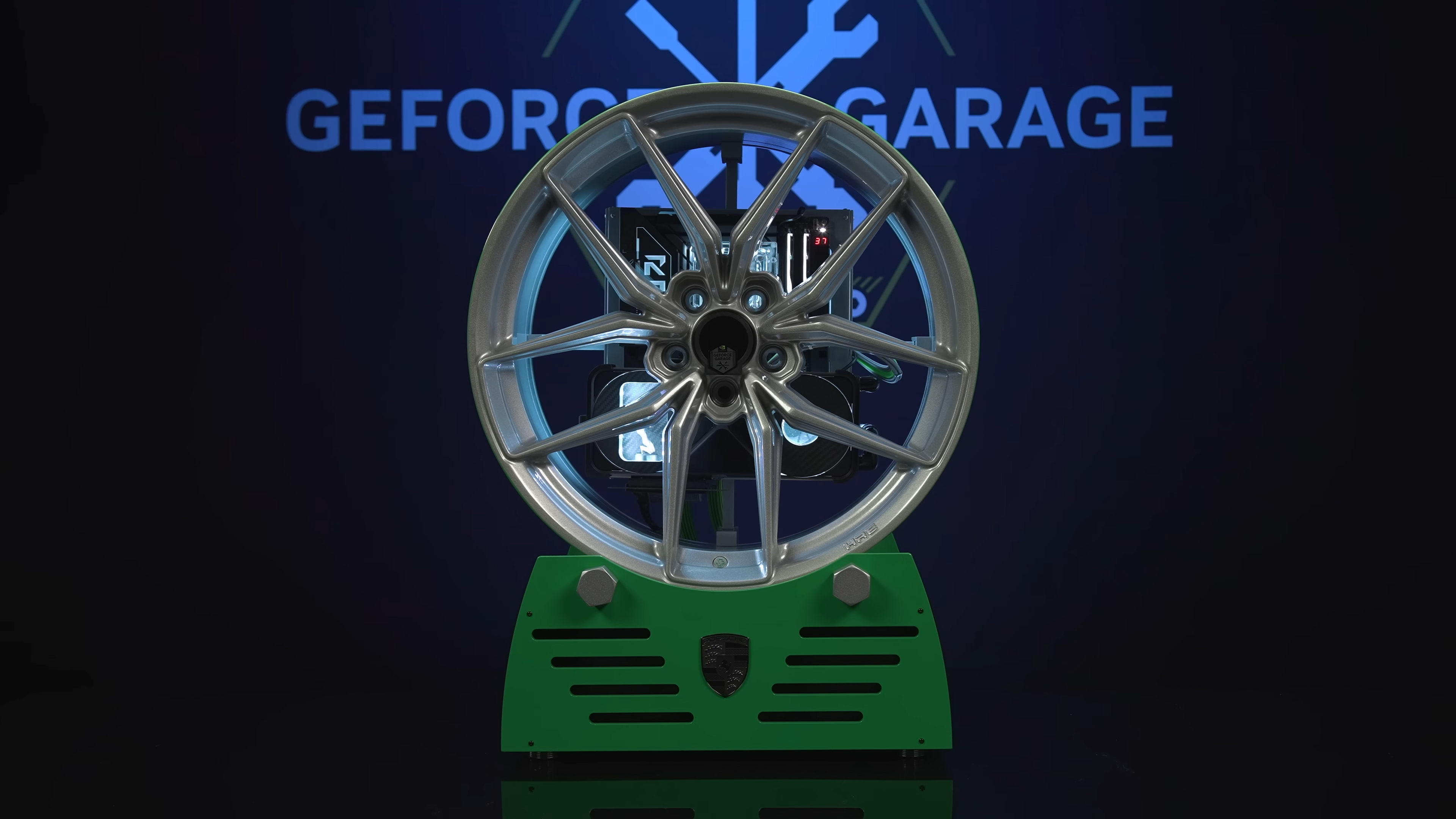
Many consider cars to be the most exciting thing out there. Those adrenaline-pumping feats of engineering, harmonizing cutting-edge hardware and software to push the boundaries of physics. A lot of people, though, are equally enthusiastic about PCs and how they contribute to the world of racing. After all, a car is technically just a computer on wheels, so why not combine the two to birth something truly unique that honors both cultures?
That's exactly what Nvidia did, in its latest episode of GeForce Garage, where it partnered up with modder JCustom (Justin Chu) to fit an entire gaming PC inside a wheel of a Porsche 911. The build also has a real key fob to turn it on or restart it, wirelessly.
Our journey begins with an HRE FF21 wheel (not acually Porsche, we know) that alone starts at $750 and that's before the custom paint job on top. See, this rig is being built for someone very special that we'll reveal at the end; they have a Porsche 911 Turbo S in the Python Green colorway, so our modder Justin decided to color-match the entire build to that. That meant power-coating the sides (barrel) of the wheel to be the same green, and even updating the silver to resemble what Porsche uses from factory.
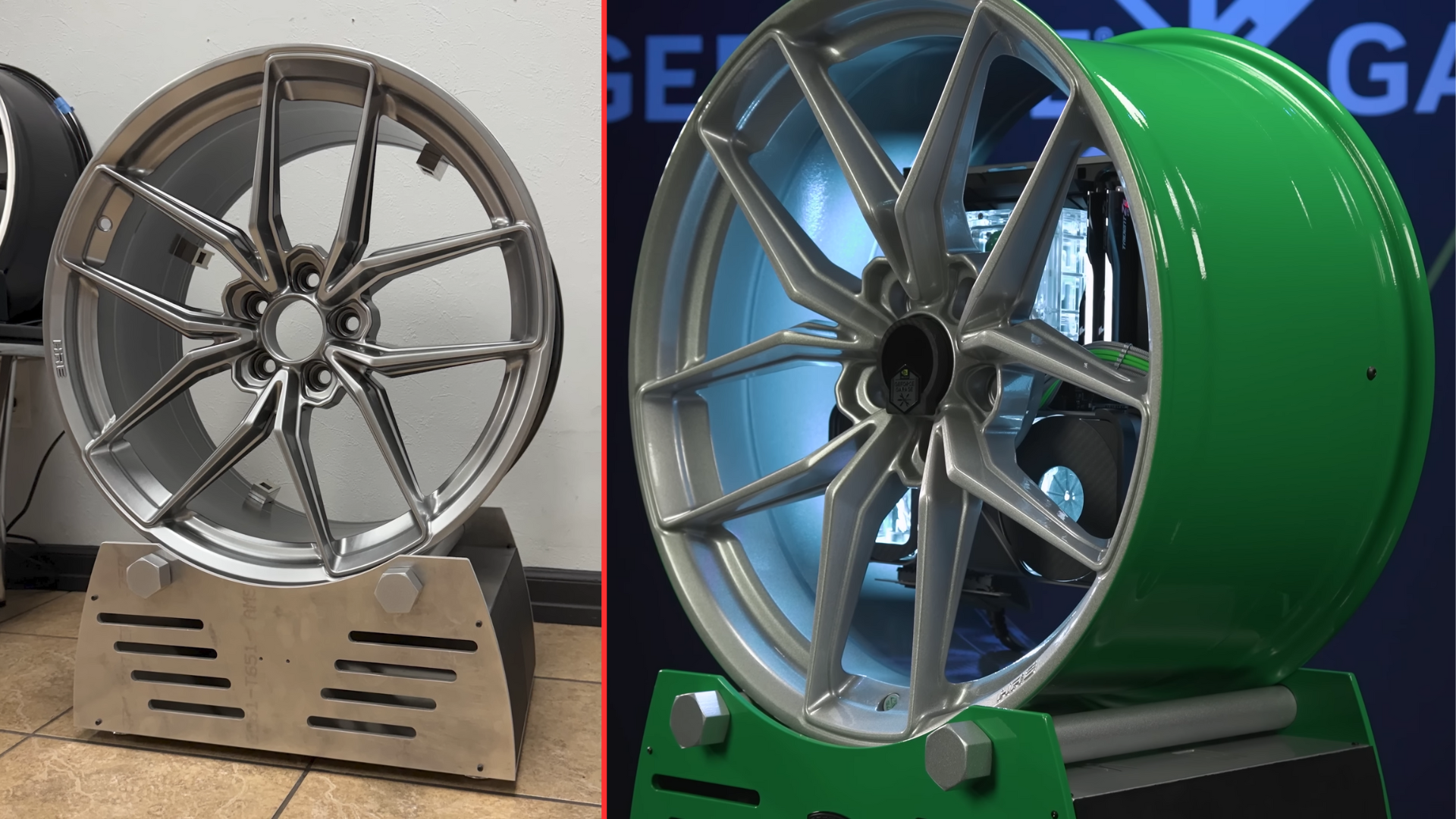
The main PC is placed right behind the spokes and appears like it's floating because the custom-built motherboard tray is mounted directly to the wheel's barrel, with the help of some tabs that extend into the tray. You can see how that looks in the next set of pictures after this. The end-result is flawless, but achieving such elegance was only possible after Justin put the wheel inside CAD to iron out all the details and create the necessary parts himself.
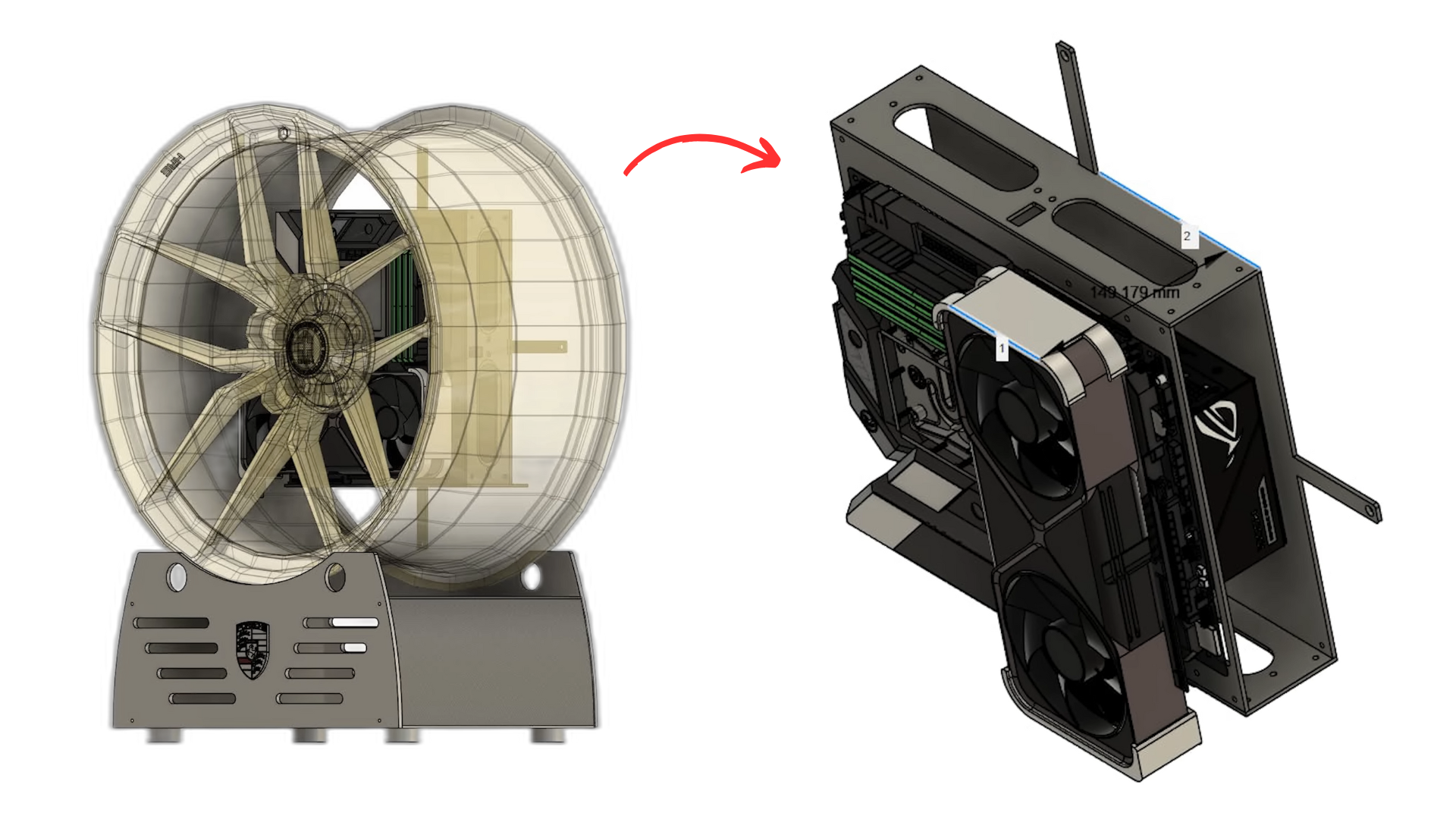
Speaking of, the motherboard tray is what houses most of the cabling as it's actually quite thick — from the pictures, we can estimate ~3 inches. The tray is suspended from four sides via metal beams that provide rigidity, and to advance this magical appearance, Justin used a back-connect motherboard. This way all the wires would conveniently route through this tray compartment, and the motherboard assembly itself would be the only thing visible on the outside.
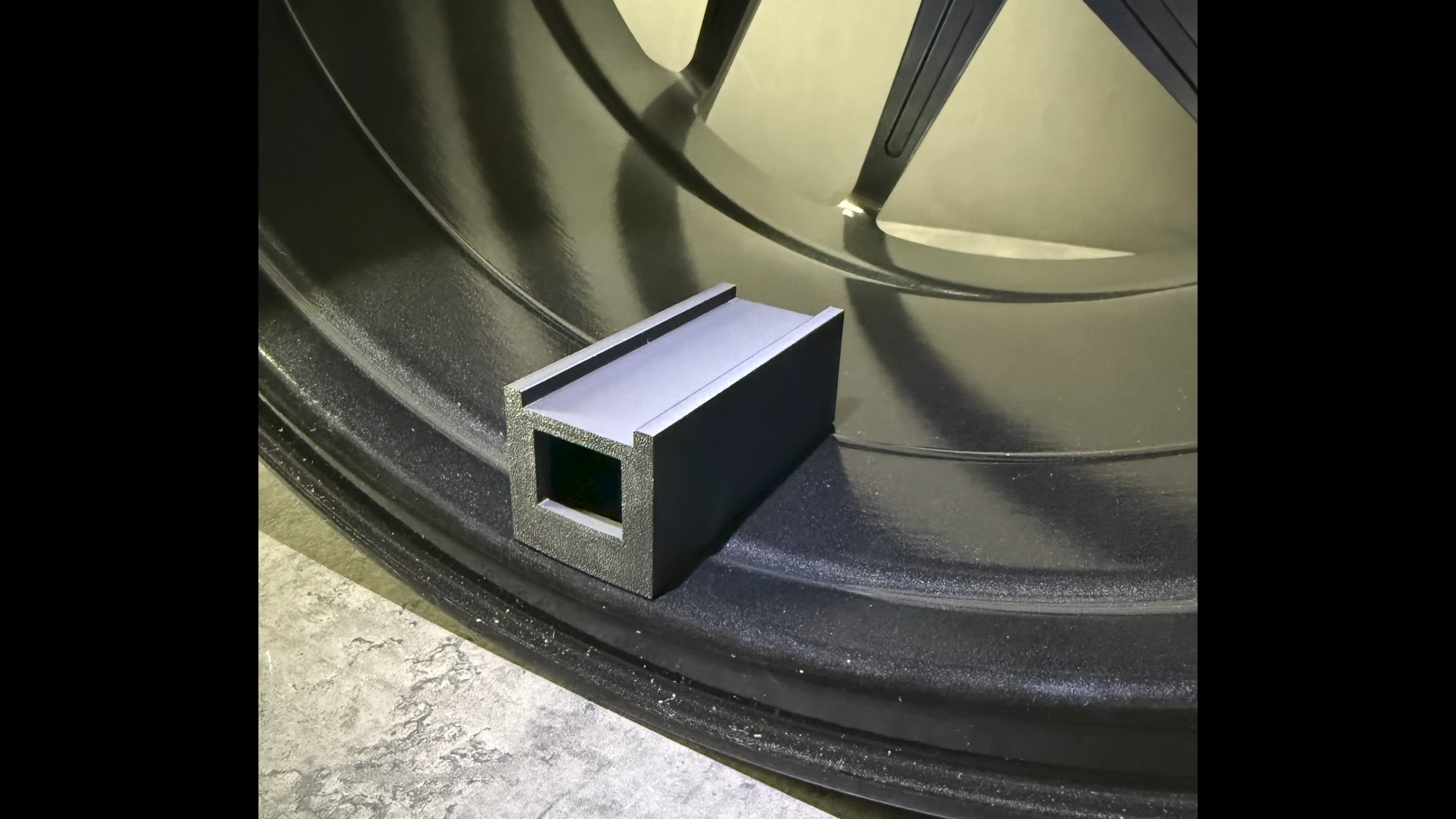
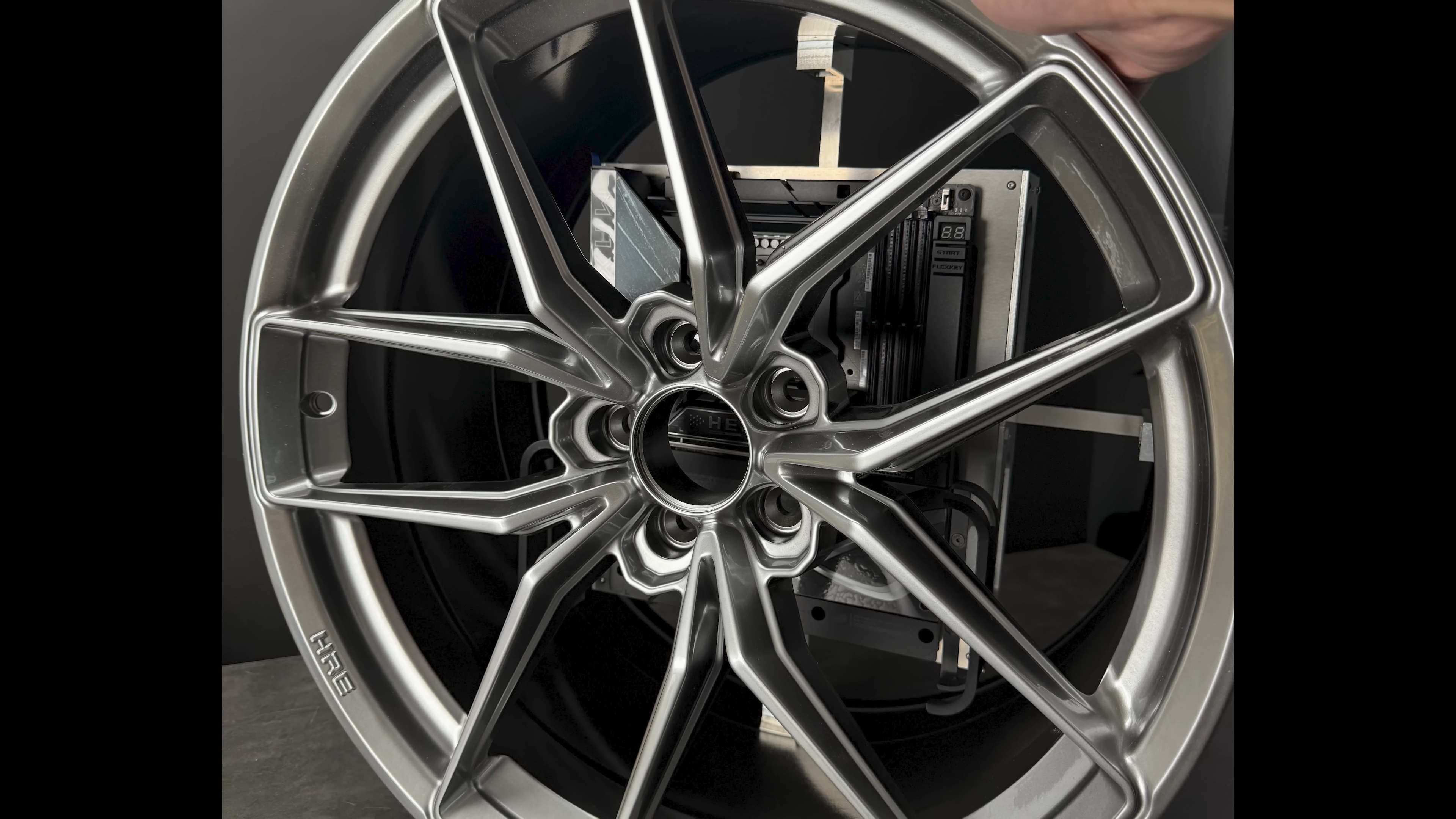

The tray includes an SFF power supply, too, and sleeved PCIe cables for the GPU, which is a Founder's Edition RTX 5080. Back-connect graphics cards have existed for a while, so it's interesting to see Justin stick with a classic choice here. You can check out the full specs of the PC in the table at the end to see what else he paired up with this GPU. Lastly, the tray also has little LED diffusers placed across the perimeter to provide a subtle ambient glow to the wheel, almost like underglow on a real car.
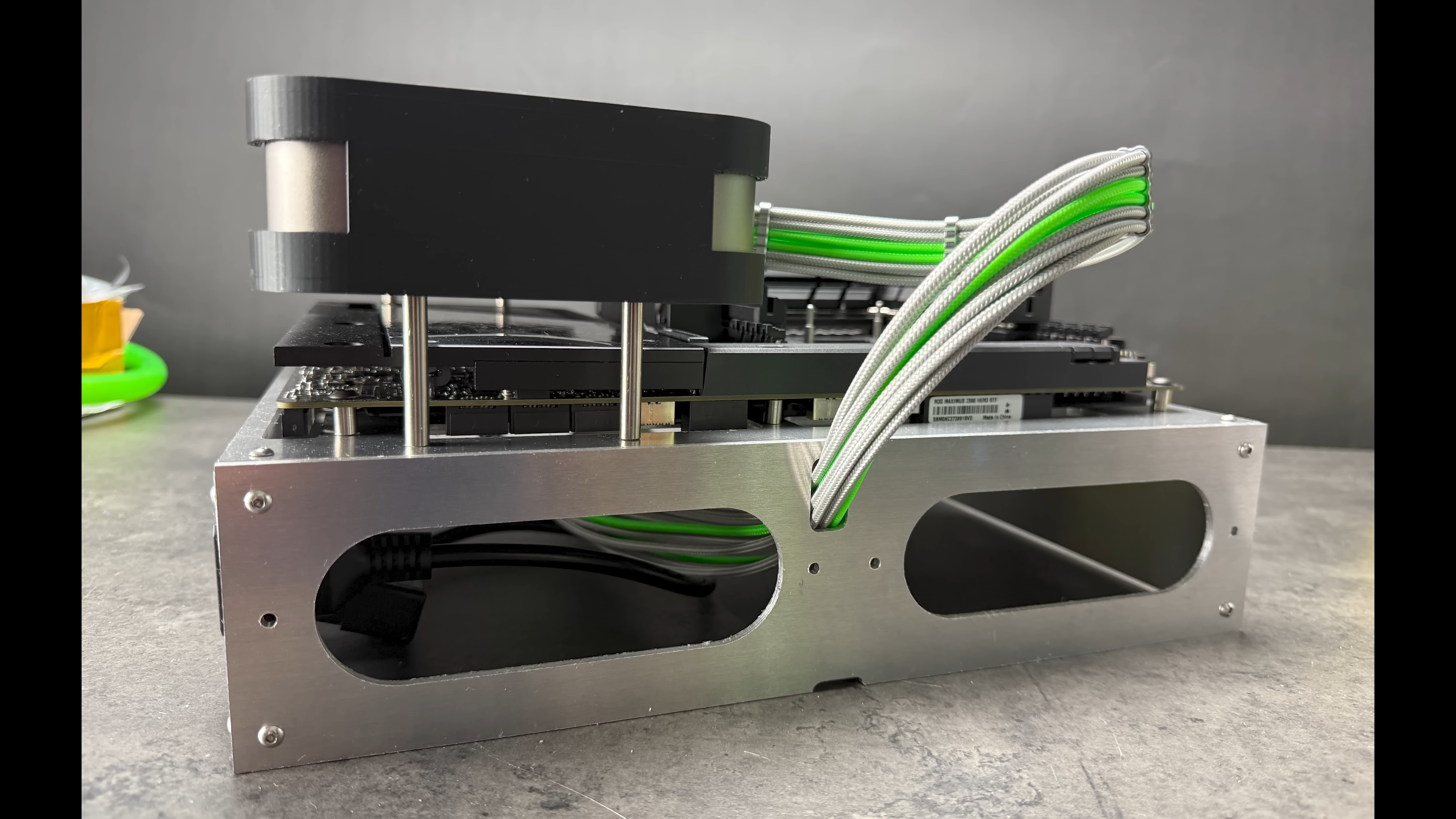
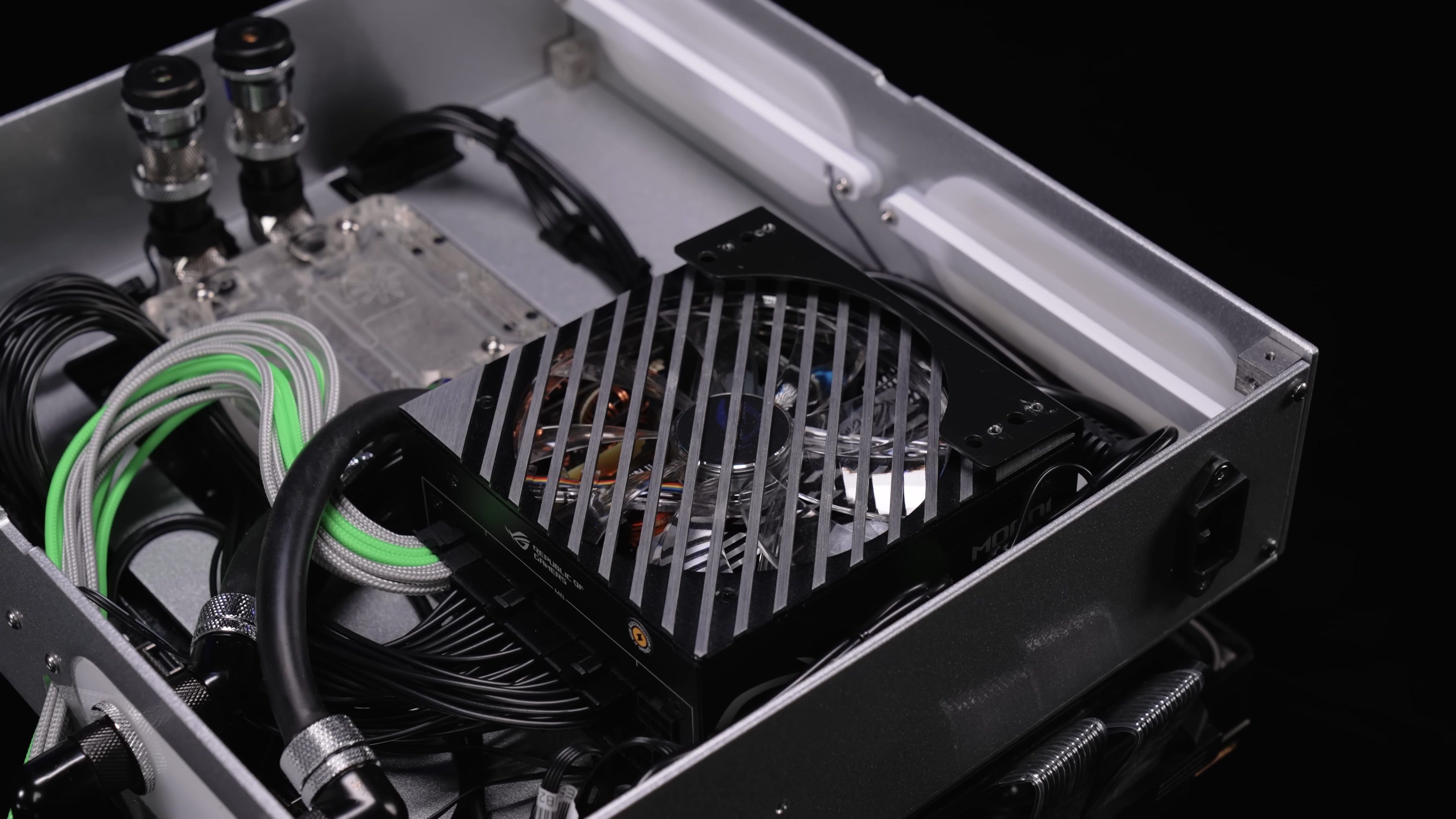
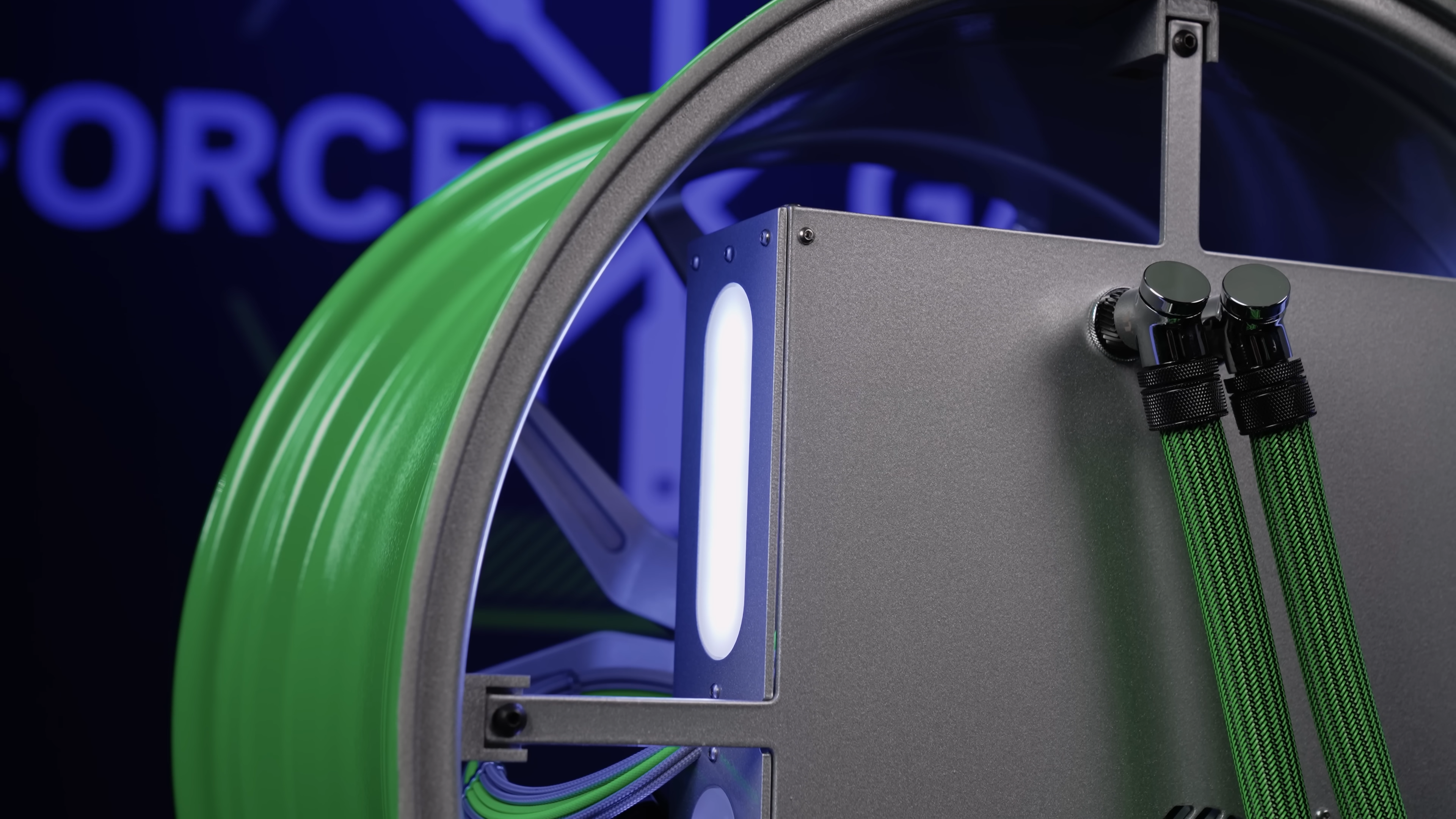
To cool the entire system, Justin separated the custom liquid-cooling into its own apparatus, sitting beneath the wheel assembly. This compartment fits the pump, reservoir, radiator and all the tubing for the loop, which is connected to the CPU and GPU via quick-disconnects at the back of the wheel. This is where you can also see that the rearside is entirely flush, implying that the PC can even be wall-mounted in the future.
Get Tom's Hardware's best news and in-depth reviews, straight to your inbox.
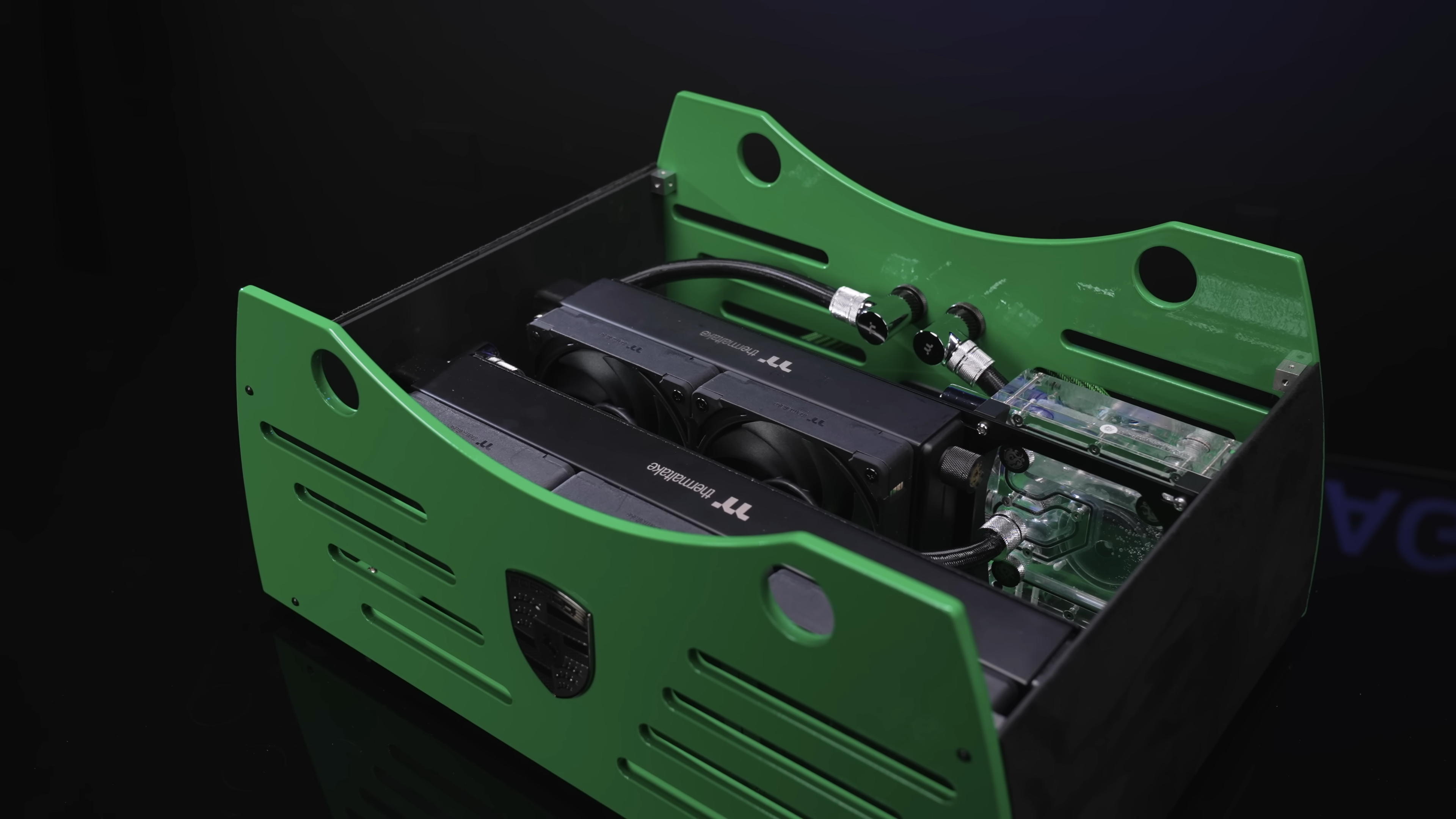
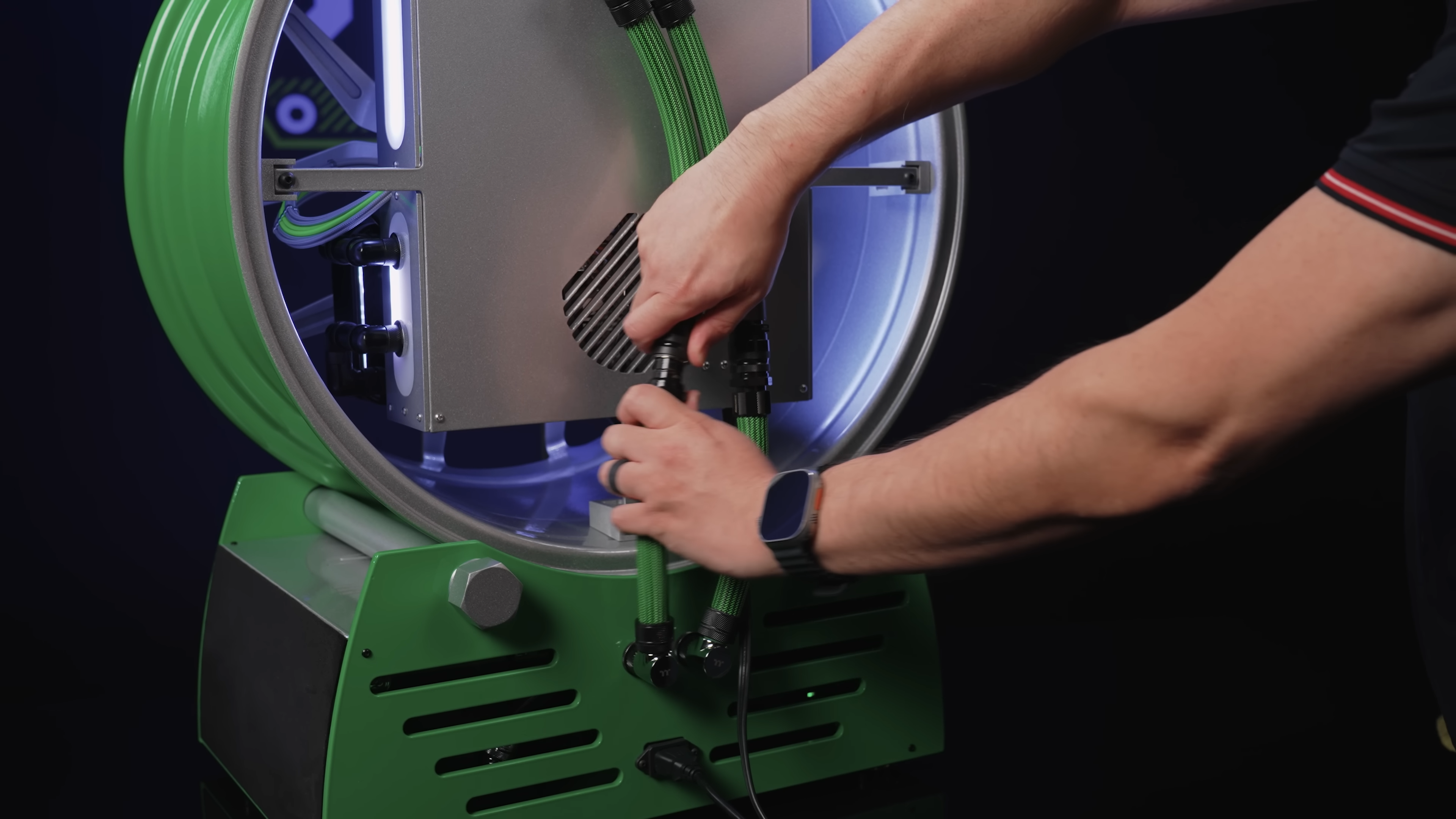
If you look closely, the water block on the CPU is tubeless, which means the water actually flows through the block's mounts itself. You can also see a miniaturized version of the aforementioned Porsche 911 floating inside it, further paying tribute to the petrolhead this PC's owner is. The GPU block, on the other hand, is made by Modern Cafe and showcases a small trophy on one side (more on what that is later), along with a spinning wheel on the other side that doubles as a flow meter.
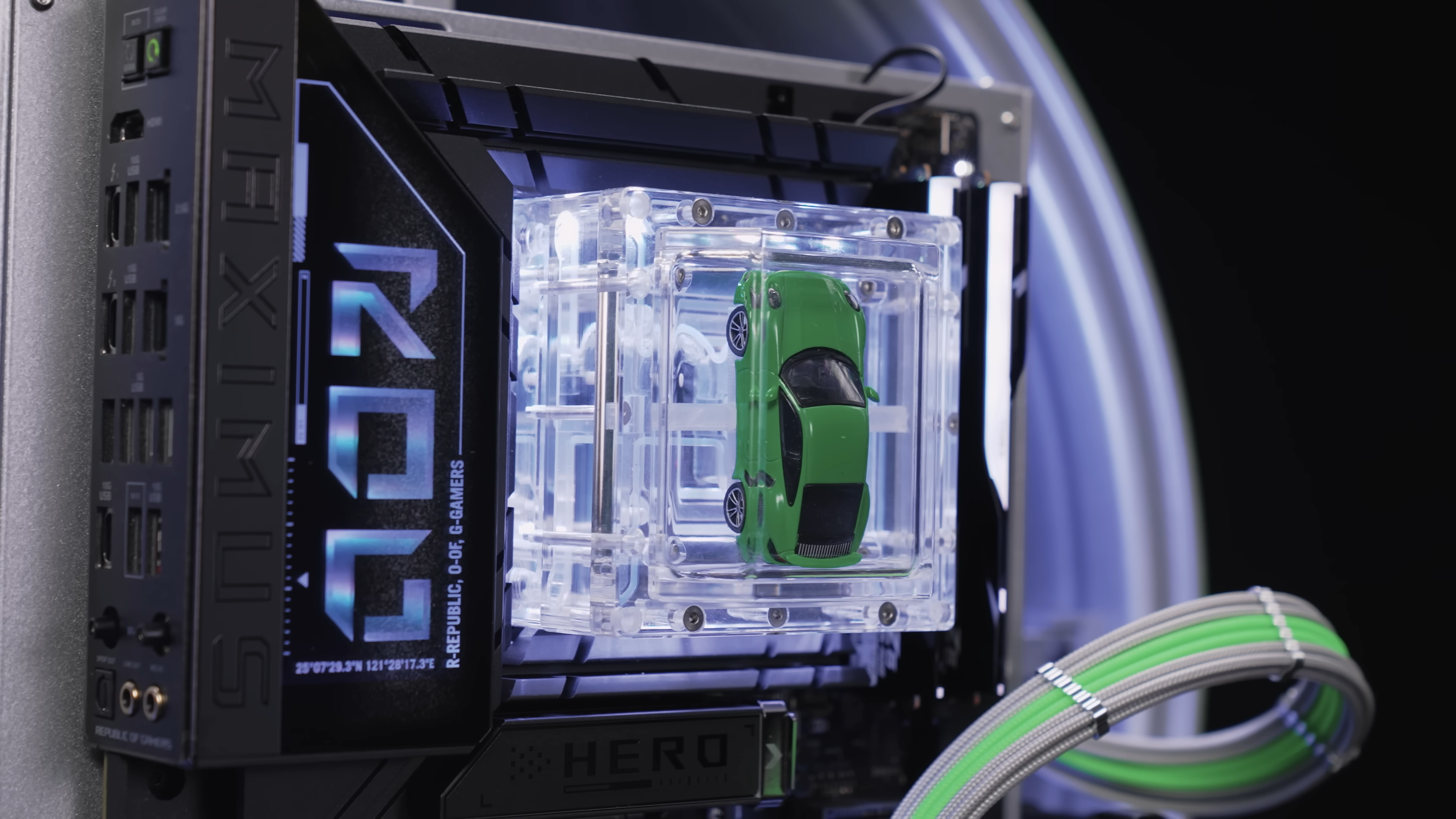
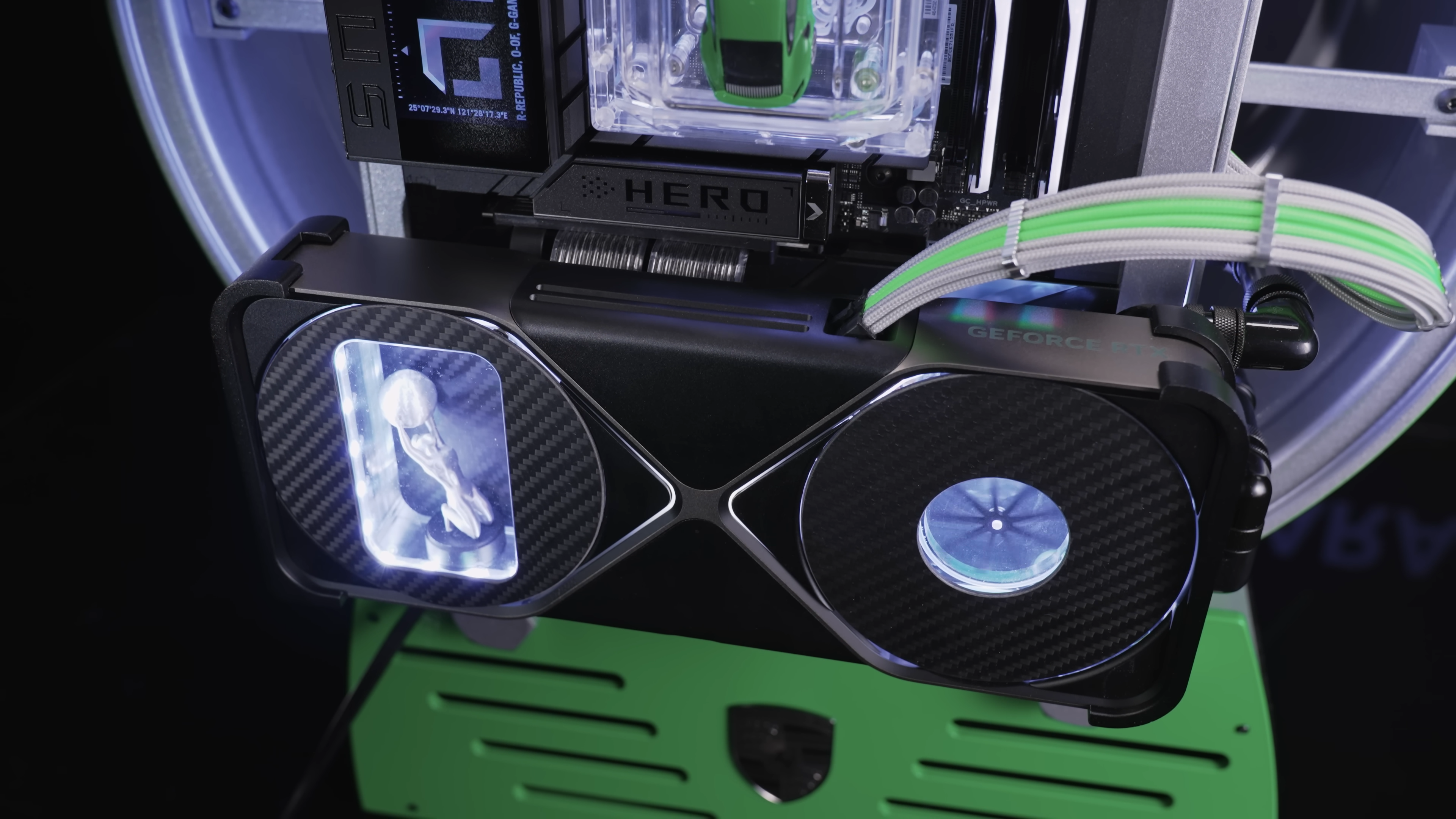
The cooling system essentially becomes a display stand for the wheel, complimenting each other both functionally and aesthetically. The build is finished off with a Python Green paint job on the stand as well, and Alcantara is glued onto the sides to simulate the luxurious feel of a Porsche's interior. A Porsche Knight badge is placed in the middle of this stand, while the wheel's center cap is upgraded with a screen for displaying telemetry data (playing what seems like custom animations), accompanied with a small GeForce Garage pin underneath.
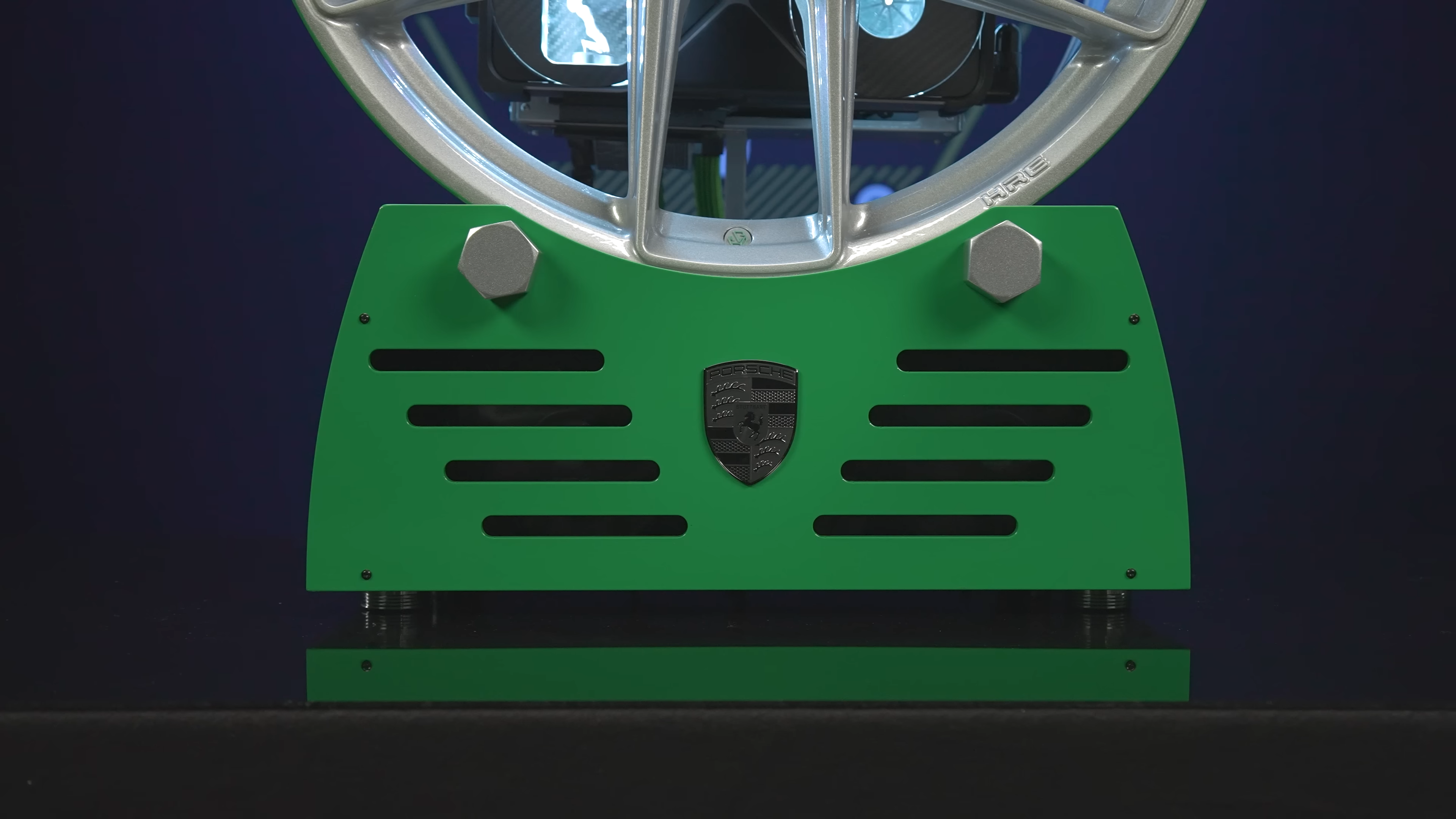
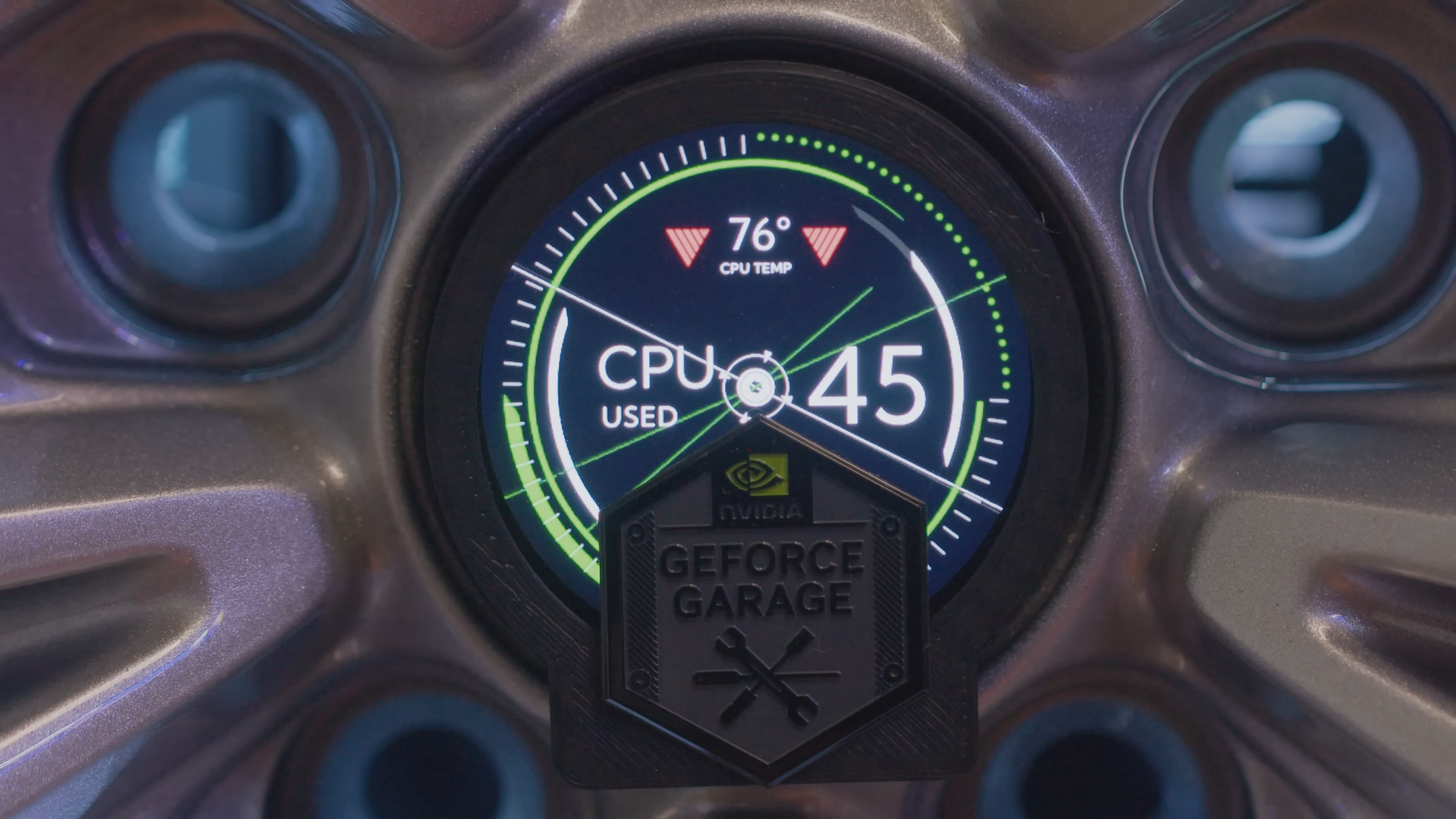
Given how powerful the specs are, it was kind of surprising to see Nvidia test two games with multi-frame gen enabled. In Borderlands at 4K with max settings and DLSS set to performance, the PC achieved 160-180 FPS. Over in Cyberpunk 2077 with max settings, along with path tracing, we saw 160-170 FPS. Forza Horizon 5 maxed out with ray tracing set to high netted around 200 FPS; DLSS was set to high but no MFG.
So, who's the lucky recipient of this technological marvel? Well, that would be up-and-coming actor Micheal Rainey Jr., who recently won an NAACP award for his role in the Starz's Power franchise, where he plays Tariq. The mini version of that exact trophy is what was enclosed inside the 5080, highlighting Michael's accolades. When he's not winning over judges, though, you can find him obsessively playing videogames, like Call of Duty.

Interestingly, prolific filmmaker Steven Spielberg — the guy who made Saving Private Ryan — wanted to direct a COD movie but Activision turned him down; instead, selling the film rights to Paramount. It would be destiny's calling to see Paramount just hire Spielberg after all, where he ultimately casts Michael as a tank driver, bridging together his acting and gaming journeys in the most poetic way possible.
Wheel | HRE FF21 |
GPU | GeForce RTX 5080 |
Motherboard | ROG Maximus Z890 Hero |
CPU | Intel Core Ultra 9 285K |
RAM | 32GB TEAMGROUP Xtreem ARGB DDR5-7200 |
Storage | 3× 2TB TEAMGROUP MP44L NVMe |
Power | ROG LOKI 1000W |
Liquid Cooling | Custom (quick-disconnects were used) |
Follow Tom's Hardware on Google News, or add us as a preferred source, to get our latest news, analysis, & reviews in your feeds.


Hassam Nasir is a die-hard hardware enthusiast with years of experience as a tech editor and writer, focusing on detailed CPU comparisons and general hardware news. When he’s not working, you’ll find him bending tubes for his ever-evolving custom water-loop gaming rig or benchmarking the latest CPUs and GPUs just for fun.
-
TheOtherOne What's that old saying? 🤔Reply
A fool and their money are soon parted!
Of course, if you have more money than brains, you wouldn't care where and how to burn it anyway.
